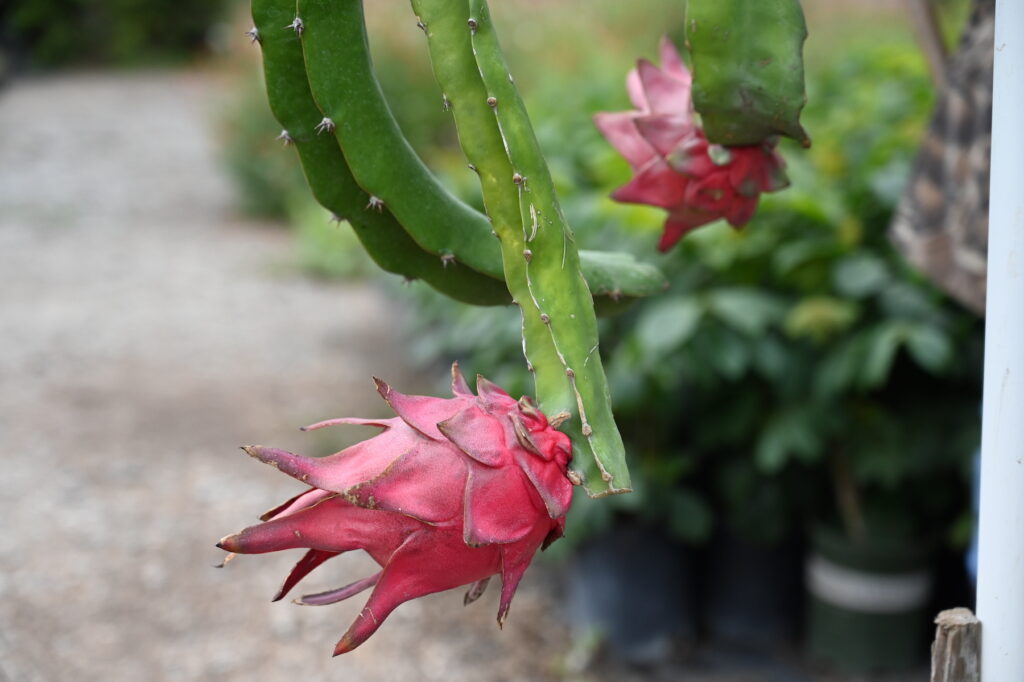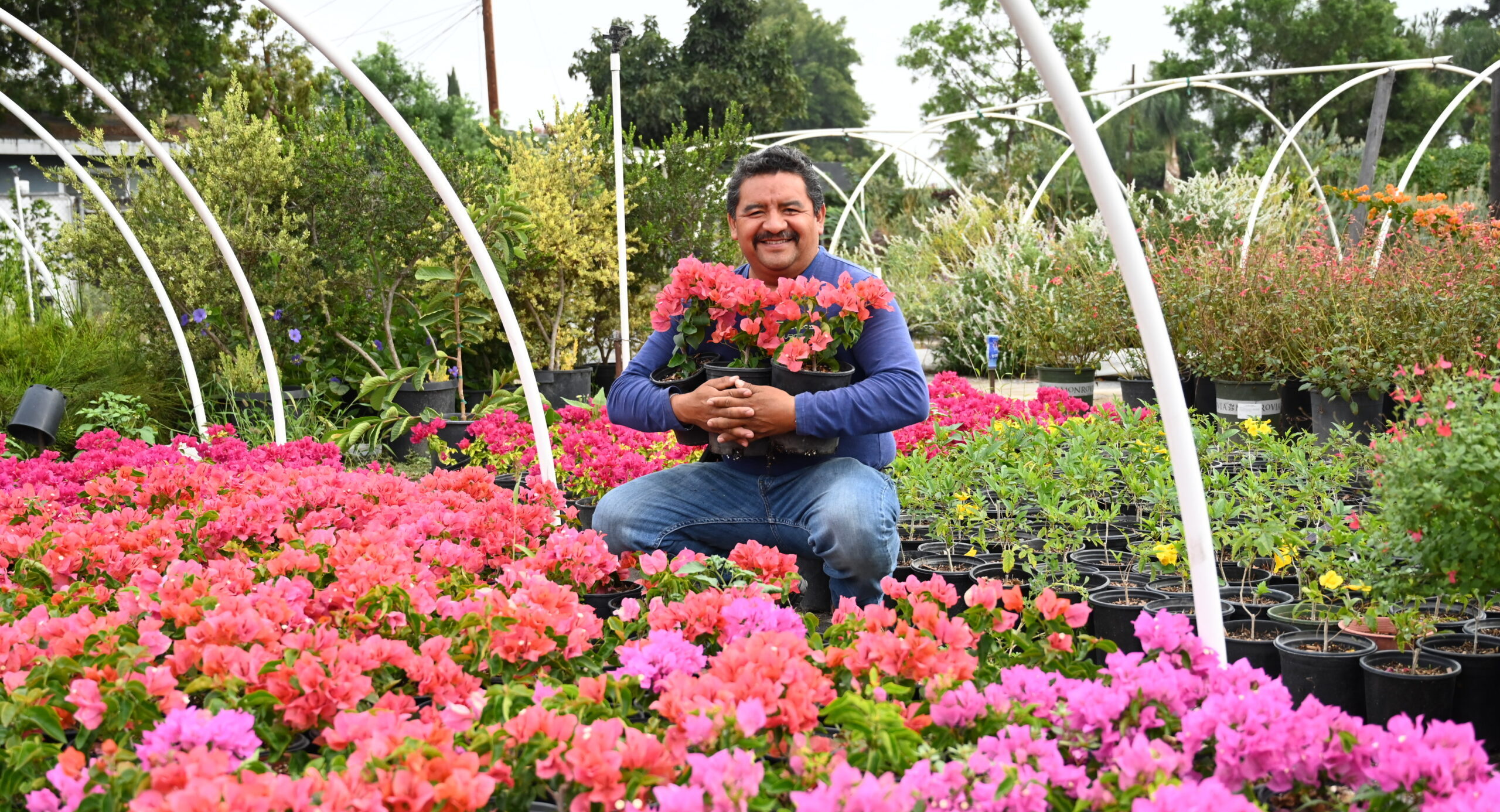Mireya Olivera | Impulso
LOS ANGELES — Fruit tree arborist Ricardo Ortiz is passionate about helping to stop climate change and reforestation, creating shade, and providing delicious food for the palate.
The Oaxacan immigrant owns Ricardo’s Nursery, where thousands of trees are developed and grafted, covering the patios of Los Angeles residents and large companies like Disney from the sun.
On a tour of Ortiz’s nursery, which covers six hectares, we saw hundreds of small, medium, and large fruit trees, including mango, plum, nance, sapote, mamey, guava, pomegranates, passion fruit, dragon fruit, custard apples and avocado.

Ortiz and his family, as well as some workers, participate in grafting, caring for, classifying and selling the trees, both those with fruit and those recently grafted.

Ortiz is an immigrant from San Mateo Piñas, Pochutla Oaxaca. His family are coffee producers, and he has worked on the family farm since childhood. His love for plants began when he saw an agricultural engineer arrive to give talks and ideas on organic coffee production.
“For me, he was like a God because he had a lot of knowledge. I wanted to be like him, to grow plants and do it naturally. As organic as possible,” said Ortiz, who emigrated to Los Angeles at 20.
He said, “In two years, we have already sold three thousand trees. Most of them go to Los Angeles, Long Beach, and all of California. We have many clients who resell the trees. We all agree that the clientele is happier with a fruit tree.”
Ortiz, a plant and tree grower from Oaxaca, loves his profession because, in addition to helping the environment, he offers his clients trees that produce fruit.
“I have always liked helping the environment by reforesting, and what better way to do it than through fruit trees? Nowadays, it is no longer time to worry about climate change; it is time to act and do something positive for our planet,” said Ortiz.
“I am satisfied with what I do; although it is a business, it is important to be consistent with what we want. It fills me with pride to provide trees, to work with trees, and to help generate oxygen to this city that suffocates us every day,” he added. “I hope more people adopt the idea of having a fruit tree.”
According to experts, planting trees can be used as a geoengineering technique to reduce CO2 from the atmosphere and thus fight climate change, as trees absorb carbon dioxide from the air when they grow.

Studies show that projects to regreen deserts may initially aim to improve biodiversity and recover aquifers and watersheds, but they also improve the economy and the well-being of the inhabitants by increasing the number of jobs in agriculture and forestry.
The arborist said that considering having a fruit tree is a very practical idea.
“If you are going to water and care for a tree, let it give you something back, like a fruit,” he commented. “Also, having a fruit tree helps create more prosperous communities, unites neighbors, and even, why not, generate merchants who decide to sell the fruit they produce.”

Ortiz explained that growing fruit trees is a new activity in his nursery.
“We have just started. This is a new project that started as a dream. I started growing seeds of nanches, black sapote, and plums (fruits that Oaxacans enjoy). I saw that people were responding, and they started looking for us because they were interested in those and other tropical fruits that they enjoy, such as fresh fruit, “aguas frescas,” ice cream, and even mezcal,” said the Oaxacan.

Ortiz said that among his clients is the non-profit community organization Tree People, which gives away trees and plants to the most vulnerable communities.
“One day, they came and told me that they needed two thousand trees to give away within the next two years to the cities of El Monte, Bell and Compton,” he added.
Ortiz’s nursery is not only a vital source of trees and plants for communities like the Oaxacan in Southern California.
During the pandemic, he and his family organized with community members to give food parcels, including fruits and vegetables, every day to people who did not have anything to eat during those critical days.
At that time, Ortiz remembers that his nursery sold more indoor plants because, for his clients, it was like mental therapy to take care of them inside their homes.
At least 250 thousand indigenous immigrants from that southern Mexican state live in Los Angeles. He wishes every Oaxacan to have a plant or a fruit tree in their home.

This story was produced by Ethnic Media Services in collaboration with the Laboratory for Environmental Narrative Strategies (LENS) at UCLA as part of the Greening American Cities initiative supported by the Bezos Earth Fund.
Mireya Olivera wrote this fellowship story for Impulso, an LA-based Spanish-language media outlet for the Latino community founded in 2004, and the only newspaper in Southern California that serves the nearly 250,000 Oaxacan residents in the area — the largest indigenous population within the Latino community.
“Oaxacan Nursery Owner Believes in Benefits of Fruit Trees” features fruit tree arborist Ricardo Ortiz, owner of six-hectare Ricardo’s Nursery, where thousands of trees are grafted to shade the patios of both Los Angeles residents and major companies like Disney.
Describing the significance of this fellowship to her work, Olivera, co-founder of Impulso, said “Green areas are essential to me because as an immigrant I come from a land of green mountains and a blue sky with the whitest clouds I have ever seen in my life, that’s why they call it the land of clouds, culture and tradition. For myself and my community, being in contact with nature and the parks is extremely important because we come from indigenous communities surrounded by greenery.”







